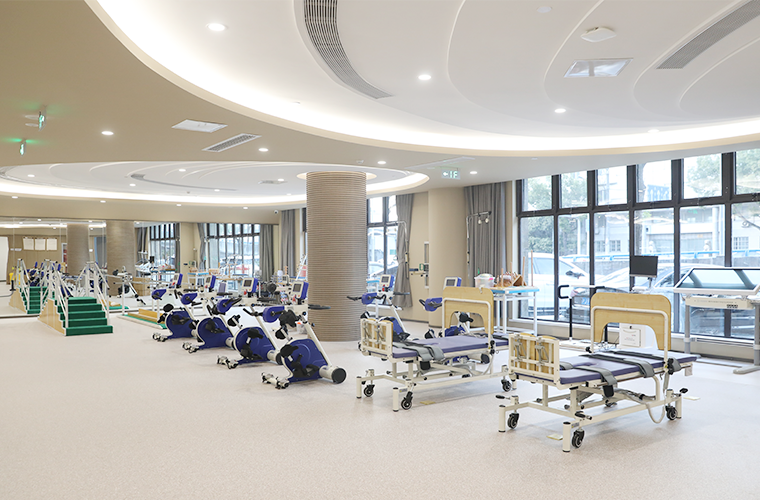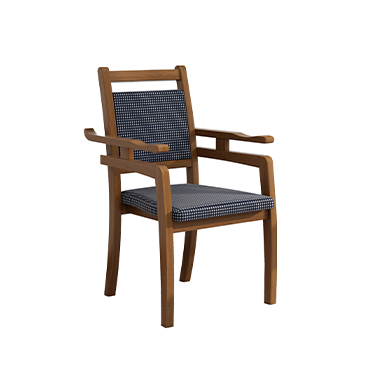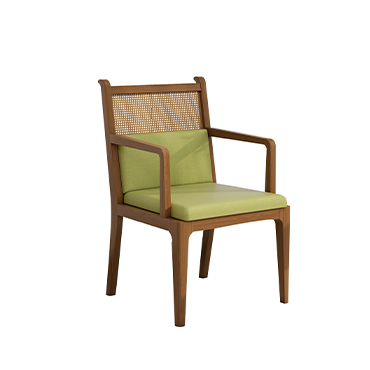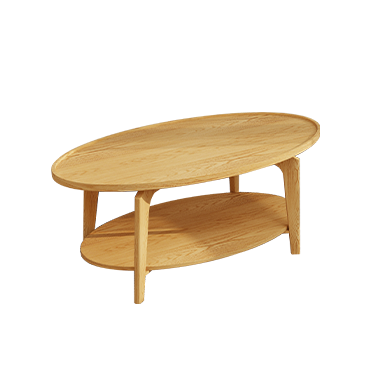How Ergonomic Design Enhances the Comfort of Elderly-Friendly Furniture
In the field of elderly-friendly furniture, comfort—next to safety—is a key criterion. And the foundation of comfort lies in ergonomic design.
Ergonomics, the study of how people interact with products and environments, helps designers create furniture that fits the natural posture, movement patterns, and physical limitations of users. For the elderly—who may experience reduced mobility, muscle weakness, or spinal issues—ergonomics is essential to ensure not only physical comfort, but also independence and dignity.
This article breaks down five ergonomic strategies to enhance the comfort of elderly-friendly furniture, with practical insights based on different furniture types.
1.Seating: Comfort Starts with Sitting Down
Design Goals: Support the back, reduce joint pressure, assist standing up
▪Seat height: 42–48 cm
Too low makes it difficult to stand up; too high causes feet to dangle. The ideal height allows feet to rest flat on the floor, knees at 90°.
▪Seat angle: 2–5° backward tilt
Helps the body sit down naturally and stabilizes posture.
▪Backrest: Lumbar support with ergonomic curve
Reduces fatigue for prolonged sitting.
▪Armrest height: 23–25 cm (from seat cushion)
Helps seniors push themselves up more easily.
▪Cushion firmness: Medium-firm, not too soft
Avoid “sinking feeling”; use high-resilience foam or memory foam for support.
Example Product:
A high-back chair with lumbar support and forward-angled armrests makes sitting and standing easier for the elderly.
2.Beds and Mattresses: Spinal Support & Assisted Movement
Design Goals: Maintain spinal alignment, facilitate getting in and out of bed
▪Ideal bed height: 48–55 cm (top surface to floor)
Enables seniors to sit with feet flat on the floor.
▪Mattress firmness: Medium-firm (support index 6–7)
Too soft makes turning difficult; too hard increases pressure points.
▪Stable bed edges
Essential for sitting while dressing or putting on shoes.
▪Headboard: Slight incline with padding
For comfortable reading or resting in a seated position.
Optional Features:
Electric lift beds, bedside support rails, and dual-zone mattresses tailored to body zones.
3.Tables and Desks: Reducing Reach and Improving Hand Positioning
Design Goals: Prevent overreaching, maintain a natural hand and eye position
▪Desk height: 65–75 cm
Should match chair height so elbows rest comfortably at 90°.
▪Knee clearance: ≥ 60 cm
Allows leg movement and wheelchair access.
▪Rounded edges and bright surfaces
Improve visual contrast and reduce injury risk.
▪Adjustable or mobile designs
Help adapt to various usage scenarios.
Real-World Optimization:
Add soft lighting under a writing desk and anti-glare surface materials to reduce eye strain in elderly users.
4.Storage and Reachability: Maximize Access, Minimize Strain
Design Goals: Frequently used items within easy reach; minimize bending and stretching
▪Golden access zone: 30–140 cm from the floor
Matches the typical reach range without bending or tiptoeing.
▪Drawers with smooth sliding and damping
Require less force to open; reduce noise and injury risk.
▪Pull handles: Large, curved grips or push-to-open
Easier for seniors with weak grip strength or arthritis.
▪Avoid deep, low cabinets
Use drawers and open shelves for better visibility and access.
Application Tip:
Customized cabinets can position daily essentials—like medicine, clothing, or tools—within reach based on elderly habits.
5.Movement and Living Zones: Ergonomic Layouts for Daily Life
Design Goals: Unobstructed movement, intuitive access, thoughtful rest areas
▪Walking path width: ≥ 90 cm
Accommodates walkers and wheelchairs.
▪Turning space: At least 120 cm diameter
Critical for bedrooms and bathrooms.
▪Clear space between furniture
Avoids tripping hazards at bed ends or chair legs.
▪Strategic resting points
Add benches or wall-mounted handrails in hallways or entryways.
Trend Integration:
Ergonomics meets smart furniture—like motorized lift recliners that assist standing up—now common in premium eldercare products.
Conclusion: Ergonomics Makes Elderly Furniture Truly Human-Centered
Designing elderly-friendly furniture isn't just about lowering heights or adding handrails—it's about building with human movement, support, cognition, and interaction in mind. From the moment one sits down to the way one gets dressed, every detail matters.
For brands and furniture designers, applying ergonomic principles to elderly furniture not only elevates product quality but also builds competitive differentiation and conveys real human care.





